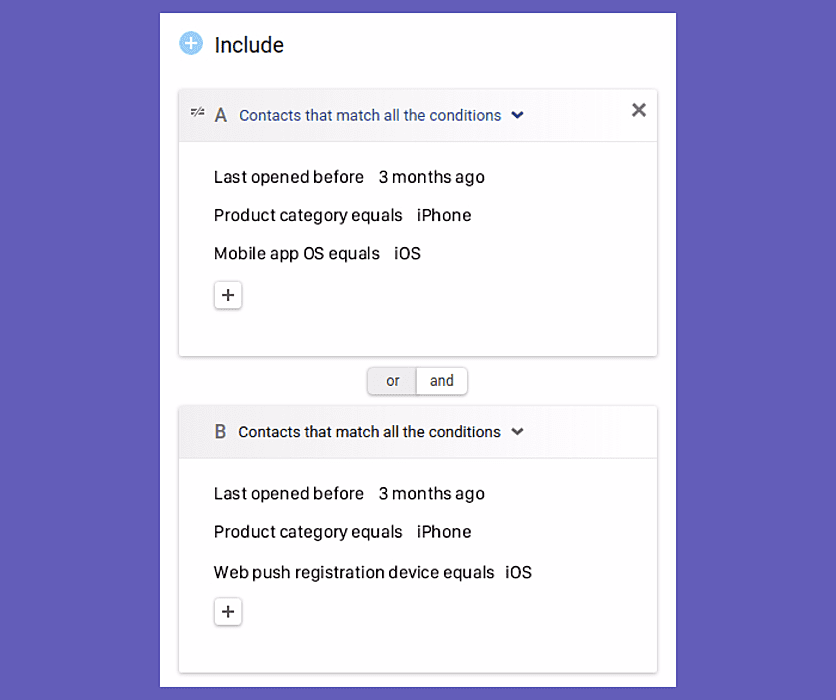
Even with GDPR and other legal regulations for data collection and management, companies strive to dig up as much data on their customers as possible. And it’s no surprise since business success largely depends on the quality and quantity of the data you have on your customers.
Data collection and management systems continue to improve and set new standards for marketing automation systems.
What does it take to make all the collected data work and to take on your marketing communications on a whole new quality level?
Upcoming Trends In Data-Drive Marketing
Below, we have covered the most interesting things that happened in the data-driven marketing field in 2019 which are as follows:
1. Omnichannel marketing
Omnichannel marketing is all about interconnecting multiple marketing channels (that are used both for sending and for collecting the information) and making them work together to offer consumers a more wholesome customer experience, by collecting real-time customer data and delivering relevant information based on this data.
For instance, when a customer adds products to a shopping cart but doesn’t buy, a business can capture this data in real-time and drive the customer back to complete the purchase with different types of messages based on their browsing behavior and cart details.
Email campaigns are not the only effective marketing channel these days. Messenger, chatbots, web, and mobile push notifications are also often used and are no less effective. Furthermore, all these channels are evolving, too.
A couple of years ago it was impossible to target web push notifications at specific customers: you could send notifications either to all of your customers or to none of them.
However, nowadays you can send web push notifications to specific customer groups using the same segmentation criteria that are used in email campaigns, starting from location and device type and ending with their browsing history.
This helped marketing specialists to turn web pushes from annoying messages into an independent, full-fledged marketing channel that allows for precise targeting.
To make multiple channels work effectively in combination with each other, you need to ensure that the marketing service you use can collect and process the data in real-time.
To create an effective marketing strategy, you need to be able to combine customer touchpoints into a seamless journey. Omnichannel marketing is impossible to implement without data unification.
2. Customer data unification
In March 2018, Gartner published an article called The Marketer’s Guide to Customer Data Platforms, popularizing the term ‘customer data platform’ (CDP). Actually, the term was invented earlier, back in 2013.
Marketing technology analyst David Raab was the first to notice that most of the marketing platforms don’t allow for unifying the collected data and suggested developing a new solution called CDP. However, the name became commonly used only in 2018, after the publication of Gartner’s article.
Why did it take 5 years for this technology to become popular? Most likely because these days we have more marketing channels and need to know our customers from different perspectives. We need to unify the customers’ information and to keep it in their individual customer profiles.
What kind of data on their customers and clients do the companies need these days?
First of all, the companies have to understand what their customers do after they receive messages from a company: whether a customer opens them, whether they read them, click on the links or interact in any other way.
Second, a company has to understand how customers interact with the website or in the mobile app after following the links in the marketing messages.
What makes it more complex is that each marketing channel has a different unique user identifier (user IDs): email addresses for email, subscription tokens for web push notifications, phone numbers for Viber, and so on. That said, customer data platforms enable you to unify user profiles across all the channels and devices they interact with.
This way, you can identify a customer no matter which channels they’ve used to get to a website. According to the eSputnik statistics, profile unification helps reduce the number of unauthorized sessions by up to 40%.
As you collect data, you can use it to create customer portraits for different types of your audience, therefore segment the contact database into customer groups based on specific criteria. This will enable you to use these segments in marketing automation to target your audience more efficiently.
3. Advanced segmentation
If your marketing automation service (including your CRM and email marketing service) has enough server capacity, you can leverage combinations of constantly changing parameters to create dynamic segments.
For instance, you can automatically target a group of customers who’ve browsed products in a certain category on your website for the past three days using devices of a particular type, but have shown no activity in your email campaigns within the past month, and so on.
Here’s an example of a segment that automatically includes all iOS users who haven’t interacted with any emails in the past three months and browsed iPhones on the company’s website.

It’s important that you automate the communications with such segments as much as possible. This way, each customer will receive the most relevant notifications that you’ll be able to prepare in advance to target this specific customer.
Therefore, the segmentation can be used to automate both strategic tasks: sending your messages and personalizing your content.
4. Email hyper-personalization
Hyper-personalized email campaigns are a great example of how businesses can creatively leverage vast arrays of their subscribers’ data. With enough data on how users interact with your service or brand, you can digest it into valuable insights, both for your business and for your customers.
Based on the statistical observations, you can send your subscribers tips on how they can improve their user experience: how to save money, how to use your products or services more effectively, and more.
Many big companies use hyper-personalization to improve their audience’s loyalty. For instance, the online grammar-checking platform Grammarly sends weekly emails called Weekly Insights.
Such emails show users the statistics on the texts written and checked in Grammarly during the past week: how many errors were there, which were the errors, how these results look compared to the previous ones, and more.

Hyper-personalized marketing approach helps to establish closer connections between a brand and a customer. This way, customers will be able to more effectively use the capabilities of a complex product.
Needless to say, you need to automate the personalized content as much as you can in order to send a hyper-personalized email to thousands and thousands of customers. For instance, easyJet’s marketing specialists came up with a 49-rule algorithm while creating their famous “How 20 Years Have Flown” email campaign.
As a result, each subscriber received an original report about their travels, along with personalized tips on where they could fly to next time.

Developing such a creative approach was, without doubt, a very time-consuming task; however, it paid off massively.
The open rates for the campaign turned out to be 100% higher compared to the non-personalized emails and the click-through rates turned out to be 25% higher. Furthermore, thousands of the company’s customers shared this information on their social media.
Final Thoughts
Data-driven marketing involves, above all, taking a smart approach to the customers’ data. The success of your marketing campaigns does depend on the technical capabilities of the tools you use to collect and process the data.
However, your ability to outline an effective route in this wealth of data plays a crucial role. You need to come up with ideas on how to improve each user’s experience and how to make your communication mutually beneficial for both your customers and your brand.
Also, if you like reading descriptive articles on such interesting topics straight from the mobile app industry then make sure to follow MobileAppDaily by clicking on the ‘Subscribe’ button now.










